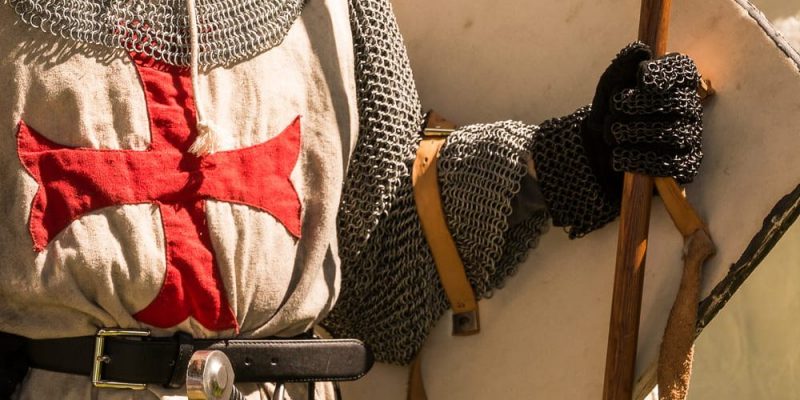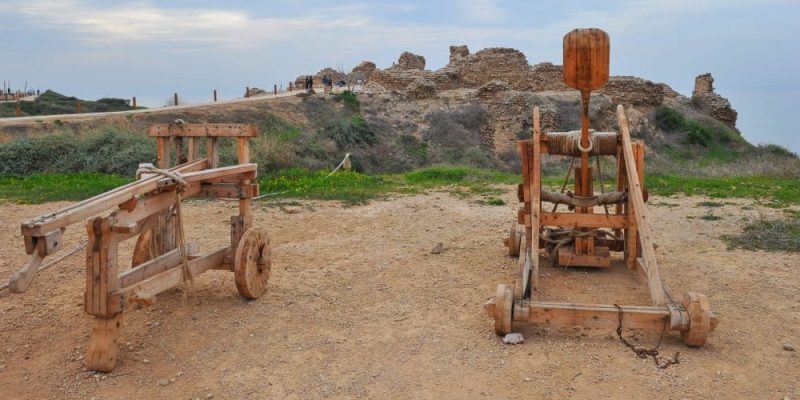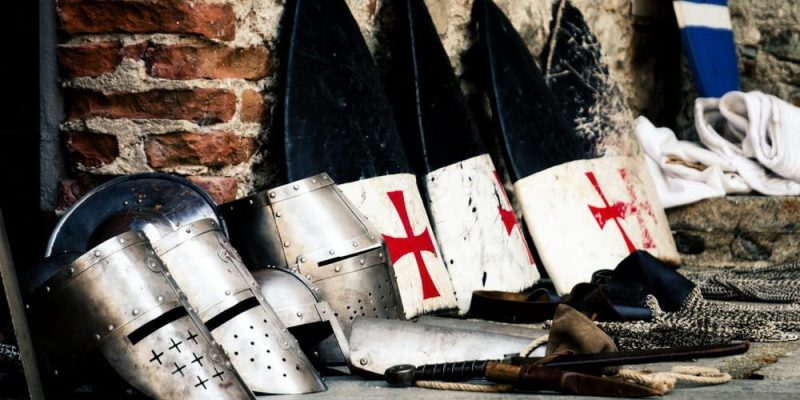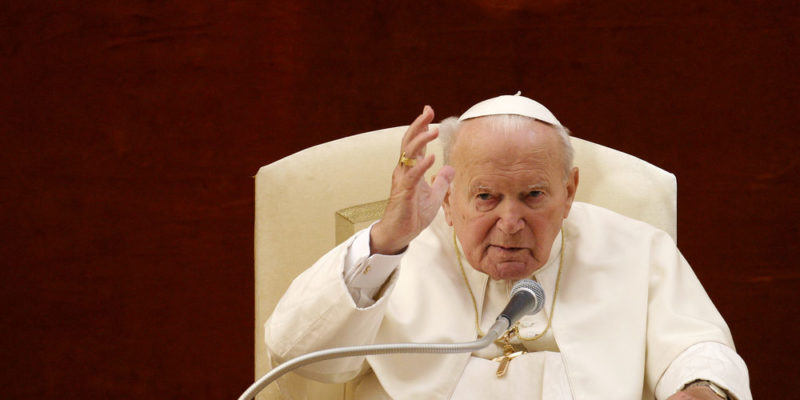We explain what the Crusades were, what their causes were and how they are classified. In addition, its characteristics and consequences.
What were the Crusades?
It is known as the Crusades to a series of military campaigns carried out by much of Christian Europe , in particular the France of the Capetians and the Holy Roman Empire, under the impulse of the ecclesiastical authority, the Pope.
They took place for two centuries (1096 and 1291) and were intended to regain political and religious control of the Holy Land.
In principle there were nine different crusades, four major and five minor , but there were also later in history a series of wars in Spain and in Eastern Europe that were also called as such and that in some cases lasted until the 15th century. .
The soldiers who participated in these papal armies were called crusaders and they wore a cloth cross sewn over their clothing , to identify themselves as loyal to the Roman Catholic Apostolic Church. In exchange for their efforts, all previous sins they had committed were forgiven.
Background to the Crusades
Around 1000 AD. C., the division of the Roman Empire into two: the Holy Roman Empire and the so-called Byzantine Empire , had given the latter control of the territories in the Middle East and Asia that had been part of the unified Empire.
These borders were besieged by Islam , especially the Seljuk Turks, to the point of forcing the empire to give up part of the territory (present-day Turkey and its surroundings) and allowing the Muslims to settle not too far from Constantinople.
Emboldened by victory at the Battle of Manzikert in 1071, the Turks annexed the territories of Syria , Palestine and entered the holy city of Jerusalem, the cradle of the religious mythology of Christianity .
Origin of the term Crusades

The crusades obviously get their name from the cross with which the Catholic religious imaginary is identified , which was embroidered on cloth on the uniform of the crusader soldiers or painted on their shields and other implements.
Causes of the Crusades
The main causes of the call for crusades were always the liberation of the “Holy Lands” of Jerusalem from the hands of Muslims, pagans or heretics.
However, behind these religious pretensions was also the desire to expand the area of commercial and economic influence of the feudal nobility, who allied with the Church sought to increase the influence of the Pope in the world.
The Major Crusades

- First crusade. It began in 1096 and culminated in 1099, with a Christian victory and control of the disputed territories by the Western powers. This meant the recovery of certain eastern territories by the Byzantine Empire and the establishment of the Eastern Latin States.
- Second crusade. It took place between 1144 and 1148, after the fall of the county of Edessa, the first Latin State before the Seljuk Turks. The Christian armies of the French King Louis VII and Conrad III of Germany marched across Europe and the Byzantine Empire to reach Anatolia and be defeated by the Muslims, who then besieged Jerusalem in 1187. At the same time, the crusaders marching east passed through the Iberian Peninsula and retaken Lisbon, Almería and Terragona in 1147.
- Third crusade. It occurred between 1187 and 1191 and was known as the Crusade of Kings. It had the objective of recovering Jerusalem from the control of the Caliph Saladin (Salah al-Din Yusuf ibn Ayyub), a task that was only partially achieved after a series of important coastal Christian victories, with the signing of the Treaty of Ramla that ceded control of Muslims to the holy city but allowed Christians to make their pilgrimages freely.
- Fourth crusade. It began in 1202 and culminated in 1204, but this time not against the Muslims who still controlled Jerusalem, but against the Byzantine Empire whose relations with King Henry VI of Germany had soured. The manipulations of the Republic of Venice, which wanted to ensure the commercial dominance of the region, had a lot to do with it. The Crusaders besieged and conquered Constantinople in 1204 and looted it for several days. They then proclaimed the Latin Empire in its place.
The Lesser Crusades

- Fifth crusade. It began in 1217 and culminated in 1221. He proposed to defeat the Muslim state of Egypt, as a way to recapture Jerusalem. The greatest army of all the Crusades rose up and was put under the command of the Crusader King Andrew II of Hungary. After initial victories at the mouth of the Nile , the army risked attacking Cairo and was defeated and forced to abandon even previously conquered lands.
- Sixth crusade. Between 1228 and 1229 this crusade took place under the charge of Frederick II, who had been excommunicated by the Pope for delaying in obeying his orders. Surprisingly, the internal tensions of Islam allowed the German king to ally with Sultan al-Kamil against his enemy al-Naser, in exchange for Jerusalem, Bethlehem and Nazareth. It was the first crusade without papal support.
- Seventh crusade. It took place between 1248 and 1254, in charge of Louis IX of France, once the truce signed at the end of the sixth crusade won and the Muslims sacked Jerusalem in 1244, defeating the Christian army and taking it forever. Again, the French king was defeated in Egypt and taken prisoner with all his might.
- Eighth and Ninth Crusades. 25 years after the failure of the seventh crusade, Louis IX re-attempted the conquest of Muslim lands landing in Tunis, where he contracted dysentery and died a few days later. Then the ninth crusade began, considered part of the previous one, when Edward of England joined the efforts of King Louis and also failed in 1272.
Other crusades
There were other wars that were classified as "Crusades", such as the Baltic Crusades, the Albigensian Crusades , the Aragonese Crusades or the Reconquest of Spain, or the Hungarian Crusades. However, they are not usually considered part of the Catholic effort in the Holy Land since their disputed territories were different.
The Crusader Soldiers

The extraction of the Crusader soldiers was diverse, since on the occasion of the Holy Wars many individuals coming from the bad life saw the opportunity to enlist and be forgiven for their sins, or many poor people saw the opportunity to start a military career that would lead them to a noble title.
Against whom were the crusaders headed?

The crusades were directed mainly against Muslims , whose political and religious power competed with that of Christianity as a whole, although pagans, "infidels" and subjects excommunicated by the Church, Jews, Greek and Russian Orthodox Christians, Mongols were also fought. , Cathars, Prussians and even the pope's political enemies.
Consequences of the Crusades
The crusades had various consequences in the configuration of European and world powers, such as:
- They expel the Muslims from Jerusalem.
- They expand the influence of the papacy in the world and especially in the Byzantine Empire.
- They spread Christianity in regions of the Middle East and Asia.
- They demonstrated the religious and political unity of the Christian West.
- They reactivated trade between East and West, introducing new crops and products in Europe.
- They allowed the Western appropriation of the sciences and arts of Islam, which were much more developed at the time.
- They ruined numerous feudal lords and benefited the bourgeoisie of the cities, going against the social order they sought to protect.
Forgiveness for the crusades

In 2000, the then Pope of the Catholic Church John Paul II apologized to all humanity for the massacres committed in the name of the Catholic and Apostolic faith during the Crusades, and promised that such an event would never be repeated.
The above content published at Collaborative Research Group is for informational and educational purposes only and has been developed by referring reliable sources and recommendations from experts. We do not have any contact with official entities nor do we intend to replace the information that they emit.
Cultural journalist with great interest in education and technological innovation in the classroom. The future passes through technology and it is already here. .
Leave a reply
Your email address will not be published. Required fields are marked *Recent post

Sport: What Is It, Types, Risks, Features, Characteristics and Examples

Dogs: Emergence, Features, Characteristics, Feeding and Breeds

Story: Definition, Elements, Structure, Features and Characteristics

